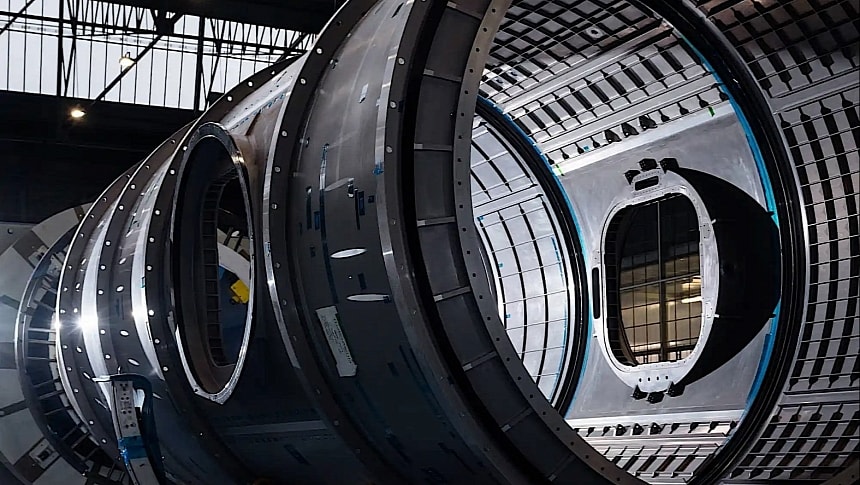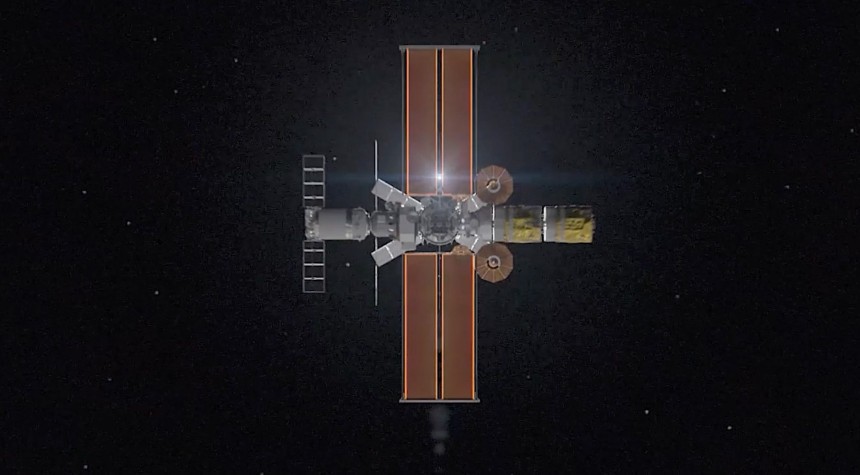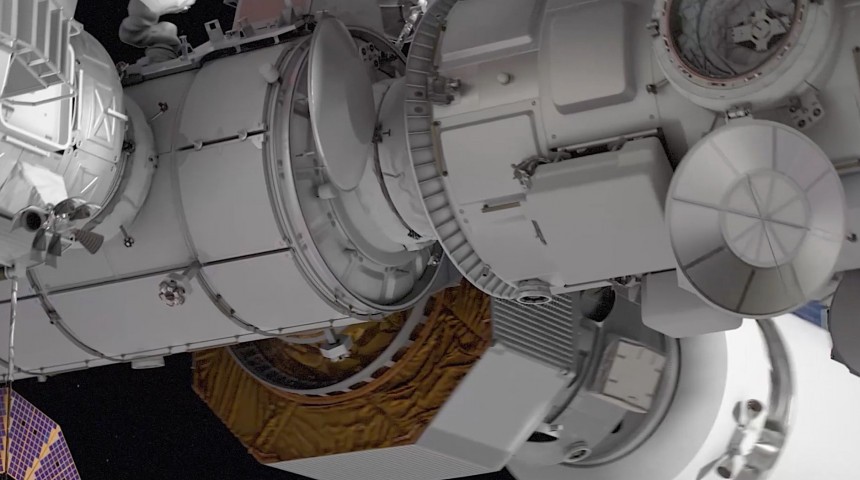There are many things going on these days in space exploration, and all of them are interesting enough to keep us on our toes. But I personally believe the Gateway space station is perhaps humanity's most ambitious space exploration project of our time.
With its sights set on the Moon and Mars, our species needs a beachhead from which to expand into the solar system. One that is far enough from Earth to make distant trips easier yet close enough to allow constant resupply.
To be placed in an oval orbit that will take it over the Moon's poles, the Gateway is that beachhead. It will be our kin's first crewed habitat to be placed close to another celestial body, the most distant space station from our home planet ever made, and an orbital laboratory the likes of which we've never had at our disposal.
When ready, the Gateway will comprise three main modules, namely the Power and Propulsion Element (PPE), the Habitation and Logistics Outpost (HALO), and the Lunar International Habitat (Lunar I-HAB). They will be accompanied by docking ports, airlocks, and a robotic arm.
The project is gargantuan in size and involves the work of four space agencies (American NASA, European ESA, Japanese JAXA, and Canadian CSA) and a small army of contractors led by the most prominent names in the industry. Private space companies, including SpaceX and Blue Origin, are also involved thanks to their connection to the Artemis Moon exploration program.
The PPE, which is the module that supplies the station with power and the means to change its orbit, is made by Maxar Space Systems and it is described as "the most powerful solar electric spacecraft ever flown."
The I-Hab is the part of the station where astronauts will live and work, but also the area where the Gateway's life support systems and camera equipment will be installed. This structure is the work of European company Thales Alenia Space.
The robotic arm, something called the Canadarm3, is a 28-foot (8.5-meter) long tool that can be operated either autonomously or remotely to maintain and repair the station, relocate modules, and catch visiting spacecraft. This piece of hardware is being put together by a team led by MDA Space.
One of the most important ways in and out of the station is the Crew and Science Airlock. This entryway is the United Arab Emirates's first contribution to a major international space program, and it is being designed by the Mohammed Bin Rashid Space Centre, the driving force behind the country's extraterrestrial ambitions.
We've talked about the Gateway and many of the component parts briefly described above a number of times before, but what brings us here today is the first close look at the station's docking ports, as they appear during the module's contruction here on Earth.
The ports are connected to the HALO module, which is the place where astronauts will live and conduct their activities, including preparing for descent on the satellite's surface. The hardware is being put together by a team led by Northrop Grumman, and it is presently on location in Turin, Italy, where it is undergoing testing.
It is from there this image (main photo of this piece) comes from, and it's glorious. On the right side the hole in the structure is actually the port where the cargo spacecraft that will be used by ESA will dock, but also the place where the Lunar View refueling and storage module will be attached.
On the opposite side a similar hole can be seen, and that's where the SpaceX and Blue Origin landing systems will dock – that would be are the actual spacecraft that will take astronauts down to the surface of the Moon and back again.
It's not long now until construction of the Gateway begins, so expect a lot more details about the project to be made public in the coming months.
The first to be sent into space will be the PPE and HALO, which will depart our world as soon as next year with the help of a SpaceX Falcon Heavy rocket.
Three years later, in 2028, the I-Hab will follow. The launch of this module was timed in such a way as to coincide with the launch of the Artemis IV mission, the second flight that will put astronaut boots on the Moon.
Such an approach was chosen because a human touch is needed to get things going on the station. As the first crew to go inside the Gateway, the four members of Artemis IV will be tasked with bringing it online and getting it ready for operations.
Most importantly, though, it is this crew that will perform the first descent to the surface using the SpaceX landing system.
In time, the Gateway is expected to become a staging point for the first crewed mission to the Red Planet.
To be placed in an oval orbit that will take it over the Moon's poles, the Gateway is that beachhead. It will be our kin's first crewed habitat to be placed close to another celestial body, the most distant space station from our home planet ever made, and an orbital laboratory the likes of which we've never had at our disposal.
When ready, the Gateway will comprise three main modules, namely the Power and Propulsion Element (PPE), the Habitation and Logistics Outpost (HALO), and the Lunar International Habitat (Lunar I-HAB). They will be accompanied by docking ports, airlocks, and a robotic arm.
The project is gargantuan in size and involves the work of four space agencies (American NASA, European ESA, Japanese JAXA, and Canadian CSA) and a small army of contractors led by the most prominent names in the industry. Private space companies, including SpaceX and Blue Origin, are also involved thanks to their connection to the Artemis Moon exploration program.
The PPE, which is the module that supplies the station with power and the means to change its orbit, is made by Maxar Space Systems and it is described as "the most powerful solar electric spacecraft ever flown."
The robotic arm, something called the Canadarm3, is a 28-foot (8.5-meter) long tool that can be operated either autonomously or remotely to maintain and repair the station, relocate modules, and catch visiting spacecraft. This piece of hardware is being put together by a team led by MDA Space.
One of the most important ways in and out of the station is the Crew and Science Airlock. This entryway is the United Arab Emirates's first contribution to a major international space program, and it is being designed by the Mohammed Bin Rashid Space Centre, the driving force behind the country's extraterrestrial ambitions.
We've talked about the Gateway and many of the component parts briefly described above a number of times before, but what brings us here today is the first close look at the station's docking ports, as they appear during the module's contruction here on Earth.
The ports are connected to the HALO module, which is the place where astronauts will live and conduct their activities, including preparing for descent on the satellite's surface. The hardware is being put together by a team led by Northrop Grumman, and it is presently on location in Turin, Italy, where it is undergoing testing.
It is from there this image (main photo of this piece) comes from, and it's glorious. On the right side the hole in the structure is actually the port where the cargo spacecraft that will be used by ESA will dock, but also the place where the Lunar View refueling and storage module will be attached.
It's not long now until construction of the Gateway begins, so expect a lot more details about the project to be made public in the coming months.
The first to be sent into space will be the PPE and HALO, which will depart our world as soon as next year with the help of a SpaceX Falcon Heavy rocket.
Three years later, in 2028, the I-Hab will follow. The launch of this module was timed in such a way as to coincide with the launch of the Artemis IV mission, the second flight that will put astronaut boots on the Moon.
Such an approach was chosen because a human touch is needed to get things going on the station. As the first crew to go inside the Gateway, the four members of Artemis IV will be tasked with bringing it online and getting it ready for operations.
Most importantly, though, it is this crew that will perform the first descent to the surface using the SpaceX landing system.
In time, the Gateway is expected to become a staging point for the first crewed mission to the Red Planet.













